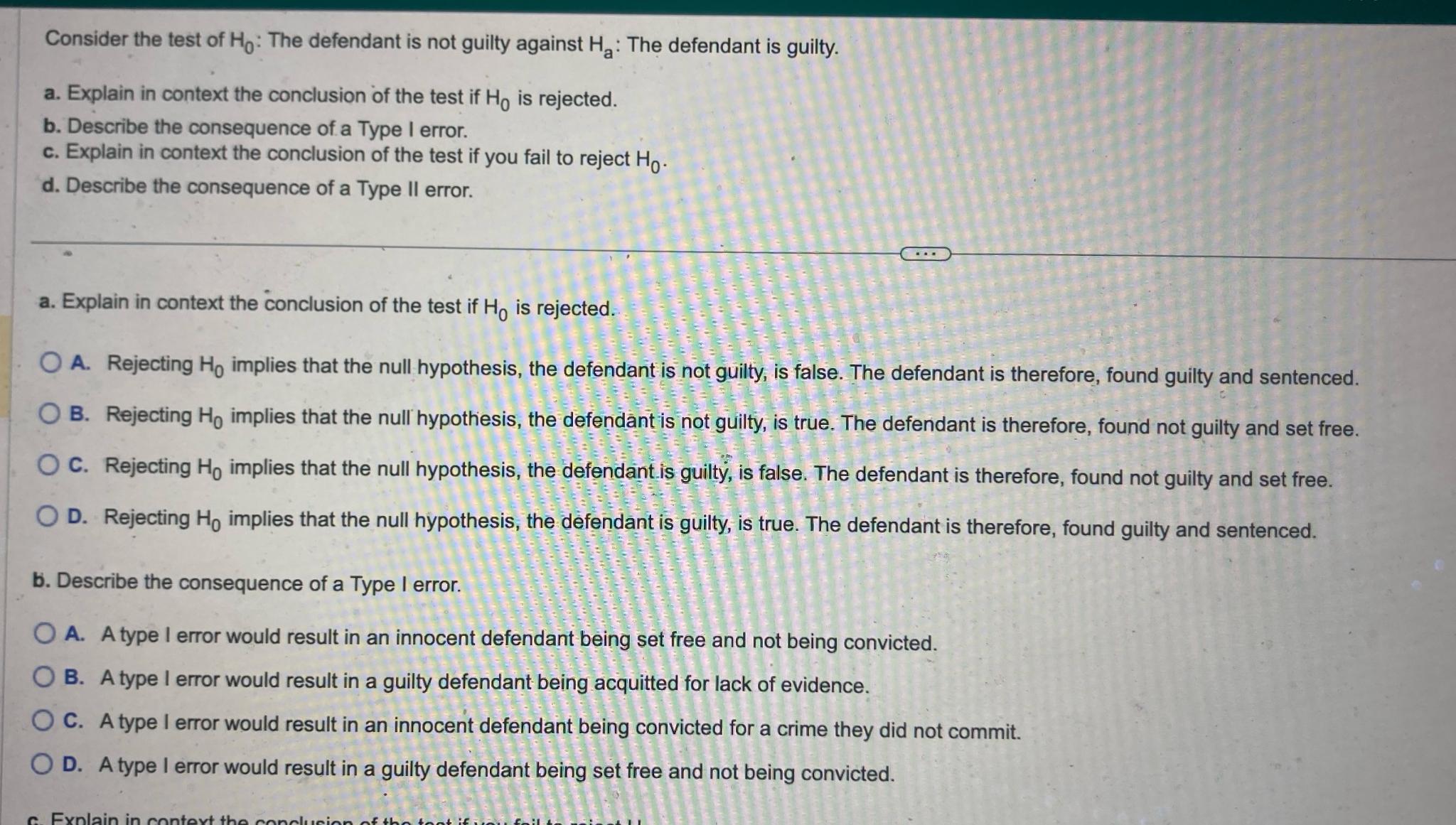Answered step by step
Verified Expert Solution
Question
1 Approved Answer
Consider the test of H 0 : The defendant is not guilty against H a : The defendant is guilty. a . Explain in context
Consider the test of : The defendant is not guilty against : The defendant is guilty.
a Explain in context the conclusion of the test if is rejected.
b Describe the consequence of a Type I error.
c Explain in context the conclusion of the test if you fail to reject
d Describe the consequence of a Type II error.
a Explain in context the conclusion of the test if is rejected.
A Rejecting implies that the null hypothesis, the defendant is not guilty, is false. The defendant is therefore, found guilty and sentenced
B Rejecting implies that the null hypothesis, the defendant is not guilty, is true. The defendant is therefore, found not guilty and set free.
C Rejecting implies that the null hypothesis, the defendant is guilty, is false. The defendant is therefore, found not guilty and set free.
D Rejecting implies that the null hypothesis, the defendant is guilty, is true. The defendant is therefore, found guilty and sentenced
b Describe the consequence of a Type I error.
A A type I error would result in an innocent defendant being set free and not being convicted.
B A type I error would result in a guilty defendant being acquitted for lack of evidence.
C A type I error would result in an innocent defendant being convicted for a crime they did not commit.
D A type I error would result in a guilty defendant being set free and not being convicted.

Step by Step Solution
There are 3 Steps involved in it
Step: 1

Get Instant Access to Expert-Tailored Solutions
See step-by-step solutions with expert insights and AI powered tools for academic success
Step: 2

Step: 3

Ace Your Homework with AI
Get the answers you need in no time with our AI-driven, step-by-step assistance
Get Started


